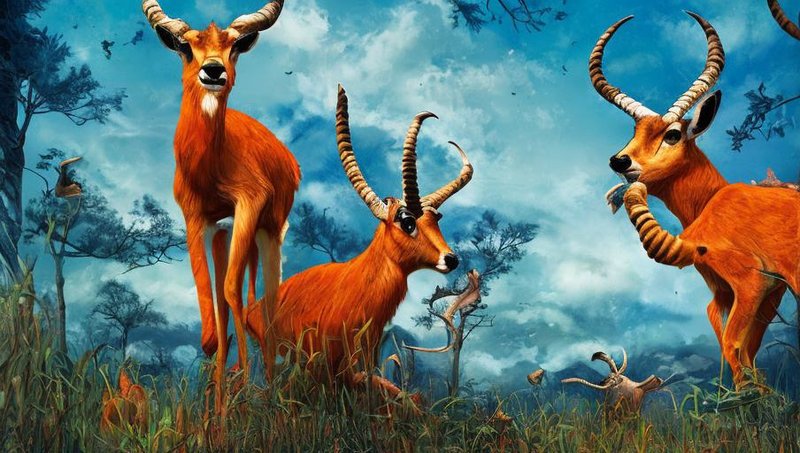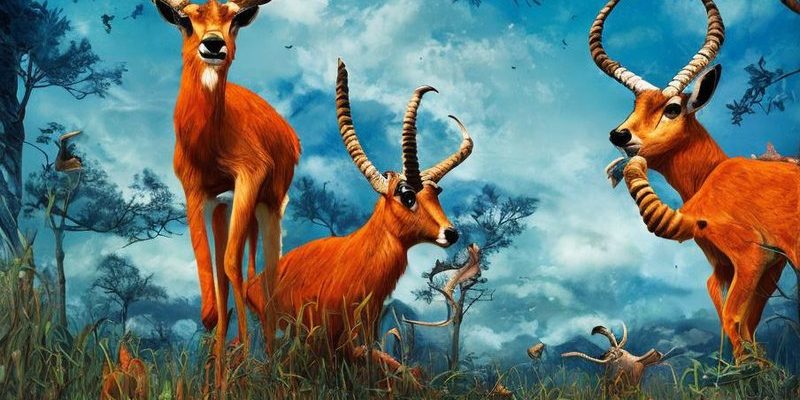
Antelopes are more than just graceful creatures running through open fields. Their cognitive abilities and behaviors reveal a lot about their intelligence. You might be surprised to find that their brains work quite differently from ours, but they’re equipped with skills that make them incredibly adaptable. So, let’s dive into the world of antelope intelligence and explore how they think, learn, and interact with their environment.
Cognitive Abilities of Antelopes
Antelopes possess certain cognitive abilities that allow them to navigate their environment effectively. Their brains may not be as large as those of primates, but they are packed with specialized functions. The way they perceive threats, remember locations, and even socialize shows that they have their own form of intelligence.
One important aspect of antelope cognition is their spatial memory. This ability helps them remember safe places, sources of food, and water. Imagine living in a vast area, where danger lurks at every corner—being able to recall where you last saw a predator or found some tasty grass is crucial. Antelopes often rely on their memory to choose the best grazing spots while avoiding predators.
Additionally, antelopes demonstrate a form of problem-solving. In the wild, they need to find ways to escape from predators like lions and hyenas. For instance, if one antelope senses danger and bolts, the rest of the herd will often follow, relying on their leader’s instincts. This instinctual behavior shows that they communicate and learn from one another, which is a sign of social intelligence.
Learning from Experience
Like many animals, antelopes can learn from their experiences. This is crucial for their survival in the wild. Imagine learning from a close call with a predator—now, that would make you more cautious next time, right? Antelopes exhibit similar behaviors.
Research indicates that young antelopes learn vital survival skills by observing older members of their herd. They mimic behaviors, such as how to graze or spot potential dangers. This social learning helps ensure that knowledge is passed down, making the herd more adept over time. The more they observe, the smarter they become.
Interestingly, antelopes also show signs of trial and error learning. If a particular route to water is dangerous, an antelope might avoid that path after having a bad experience. This adaptability highlights their capacity to learn and modify their behavior to stay safe.
Social Intelligence in Antelope Herds
Antelopes are very social animals and often live in herds. Their social structure plays a significant role in their cognitive abilities. Living in groups helps them communicate more effectively and work together to evade predators. You might even say that their survival skills depend on their social dynamics.
Within these herds, antelopes exhibit a range of social behaviors, including grooming each other and establishing hierarchies. These interactions strengthen their bonds and create a supportive environment. For example, when one antelope senses danger, it can alert the others, showcasing a level of communication that hints at their cognitive abilities.
Research has shown that some species, like the springbok, even engage in coordinated group movements when under threat. This synchronization isn’t just random; it indicates that they can read each other’s body language and respond accordingly. That awareness adds depth to their social intelligence.
Adapting to Environmental Challenges
Antelopes have evolved to adapt to a variety of environmental challenges, and this adaptability speaks volumes about their intelligence. For instance, in arid regions, they have learned to find water sources and navigate harsh terrains. It’s like having a built-in GPS system.
Their behavioral adaptations also include seasonal migrations. Many antelope species travel long distances to find food and water, demonstrating a strong environmental awareness. Understanding the changing landscape is key to their survival. Just think of them as nature’s own explorers, moving to where the grass is greener!
Moreover, these migrations are not random; they are often patterned and can be influenced by social learning. Young antelopes observe their elders, developing strategies for navigating to safe grazing areas. This knowledge helps ensure the survival of future generations.
Communication Skills of Antelopes
You might be surprised to learn that antelopes have a variety of communication methods. They use vocalizations, body language, and even facial expressions to convey messages to each other. Think of it as their version of a smartphone—using various signals to get their point across.
For example, some antelope species are known to use alarm calls when they perceive danger. These calls can vary depending on the type of threat, allowing other herd members to respond appropriately. If it’s a ground predator, for instance, they might freeze in place; if it’s from the air, they might scatter. This ability to communicate complex ideas shows a level of intelligence we often overlook.
Additionally, body language plays a crucial role. Antelopes often use posture and movement to express feelings or intentions. A raised tail might indicate alertness, while a more relaxed stance could mean it’s safe to graze. By understanding these signals, antelopes maintain harmony within the herd.
The Role of Antelopes in the Ecosystem
Antelopes aren’t just smart; they play an essential role in their ecosystem. Their behavior can influence plant growth and help maintain ecological balance. As they graze, they help control vegetation, preventing overgrowth that could lead to fires or other ecological issues.
In addition, antelopes serve as prey for larger carnivores, creating a natural balance in the food chain. This relationship is vital for the health of ecosystems. By being part of this cycle, antelopes contribute to the overall health and diversity of their habitats.
Their movements also help in seed dispersal. When they eat plants and travel, they inadvertently spread seeds through their dung. This process encourages plant growth, supporting other wildlife and maintaining the lushness of their environment. So, when you think of antelopes, remember they’re not just survivors; they’re also ecosystem engineers!
In conclusion, antelopes may not be the first animals that come to mind when we think about intelligence, but their cognitive abilities and behaviors tell a different story. From their impressive spatial memory to their social structures and environmental adaptability, antelopes show that every species has its own unique form of intelligence.
Understanding how smart antelopes are helps us appreciate the intricate web of life they are a part of. They are not just graceful creatures darting across the plains; they’re astute navigators of their environments, skilled communicators, and essential contributors to their ecosystems. So, the next time you spot an antelope, take a moment to appreciate the remarkable intelligence behind that sleek exterior—it’s truly a sight to behold!

